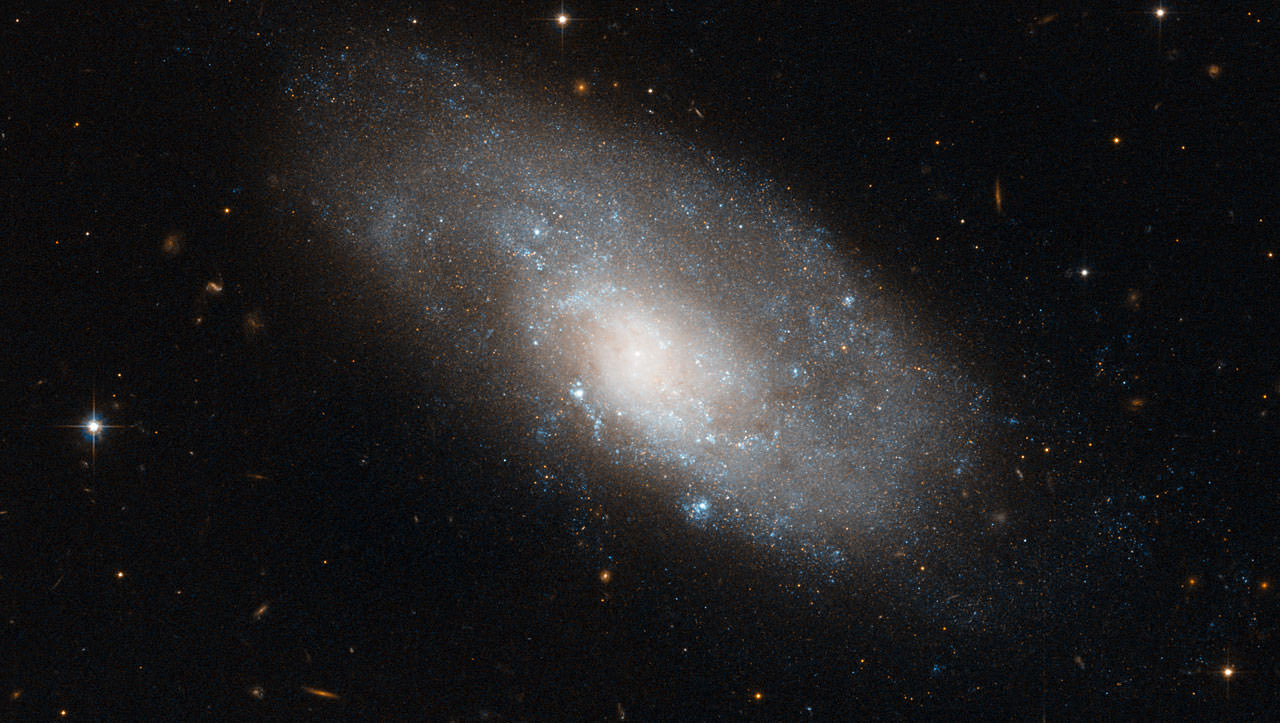[/caption]
Although somewhat blobby and deformed, this is in fact a spiral galaxy, located in the southern constellation Hydra. Imaged by Hubble as part of a survey of galactic bulges, NGC 4980 exhibits what’s called a “pseudobulge” — an inline central concentration of stars whose similar spiral motion extends right down into its core.
As opposed to classical bulges, in which stars orbit their galaxy’s core in all directions, pseudobulges are made up of stars that continue along the spiral motion of the galactic arms all the way into the center. Pseudobulges are typically seen to contain stars that are the same age as most of the others in the galaxy.
In contrast, classical bulges usually contain stars older than those found in the disk, leading astrophysicists to believe that galaxies with classical bulges had undergone one or more collisions with other galaxies during their evolution.
Our own Milky Way is thought to have a pseudobulge, while some spiral galaxies have no discernible bulge at all.
This image is composed of exposures taken in visible and infrared light by Hubble’s Advanced Camera for Surveys. The image is approximately 3.3 by 1.5 arcminutes in size. NGC 4980 is located about 80 million light-years from Earth.
Read more on ESA’s Hubble site and find out more about galactic bulges on astrobites.com.
Image credit: ESA/Hubble and NASA.


Spirals to the heart (does it beat)? Bulges of random stellar swarm? Disks with no relief?
So, IF I understand, the exquisite beauty, and elegance, of a “classical bulge” Spiral Galaxy, is suggested to be the result of at least one “collision” in its history? Mmmm ….
I wonder how these intriguing differences in Spirals relate to those mighty Engine Assemblies, rotating and spinning away at there dynamic cores (presumably).
All these types of Spiral Galaxies: Yet, from one dim view, there is a sense something strings them together, like pearls on a common silver chain.
(Are the Ellipticals like centered Jewels. set in arrangements of coruscating gems, dusty with age?)
Ah, but what? Is it really youth through age? Or could it be an unwinding in space, along expansion paths of time? Could the bulge swarm, to spiraling forces, eventually conform? And/or a Bulge flatten-out into a channeled, streaming sea of stars, dancing their circular ways, to the rhythm of rippling waves?
Pardon me, if I am too uninformed.
I am not terribly informed on galactic evolution, but it is my understanding the more bulgie a galaxy is the more its state is due to collisions. The Milky Way is pretty much thought to have formed from the coalescence with many dwarf galaxies. Hence there is a bulge. Major collisions seem to leave only a bulge behind, which is an elliptical galaxy.
LC
“Pardon me, if I am too uninformed.”
Bingo! Got it in one…